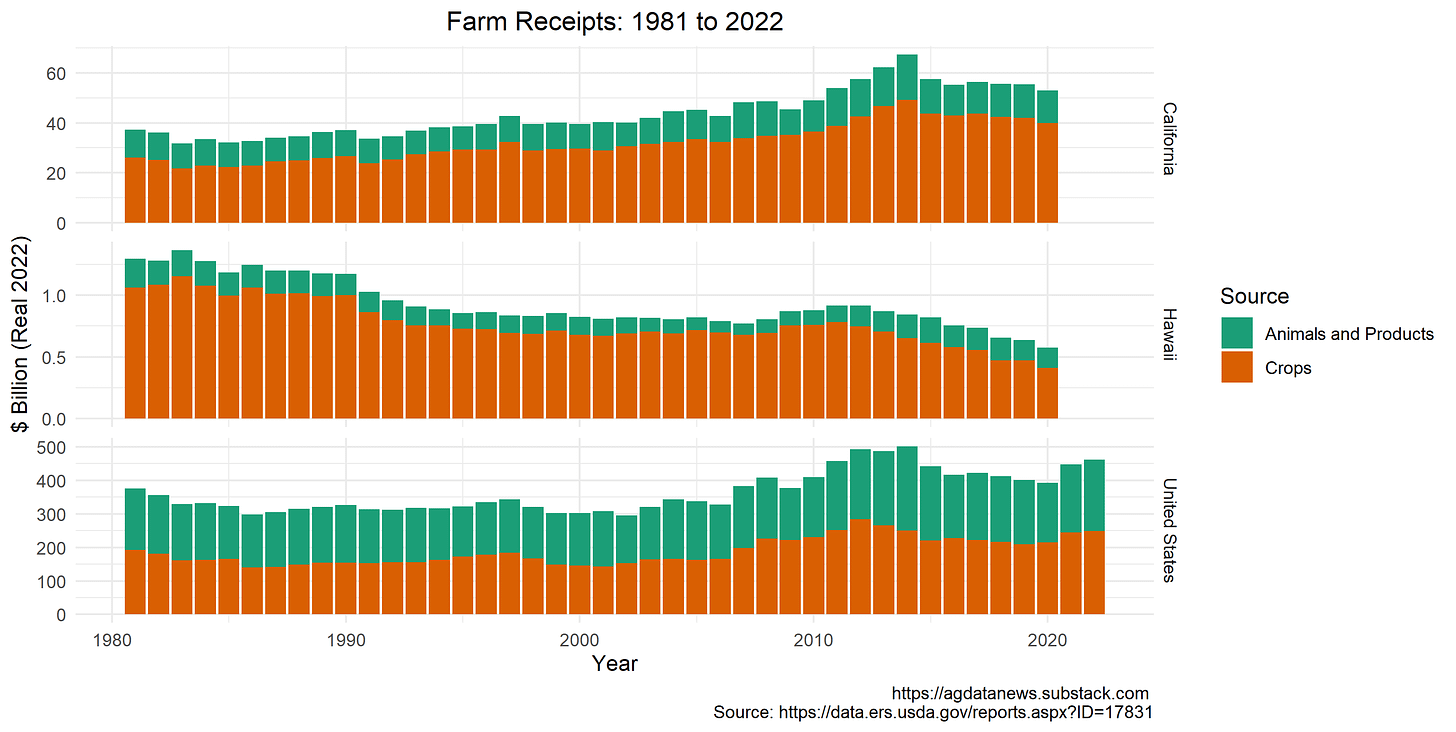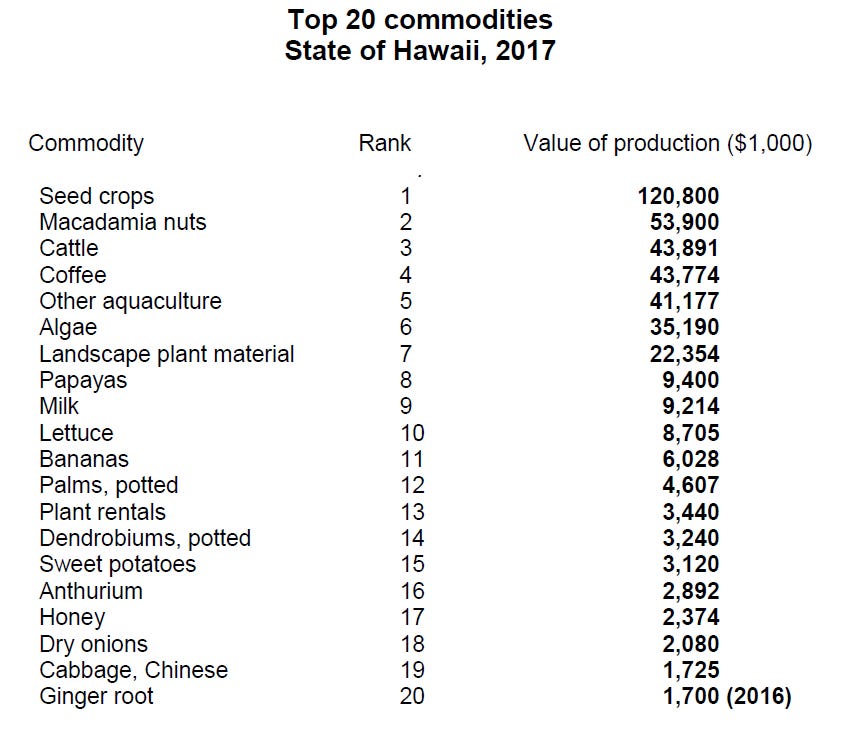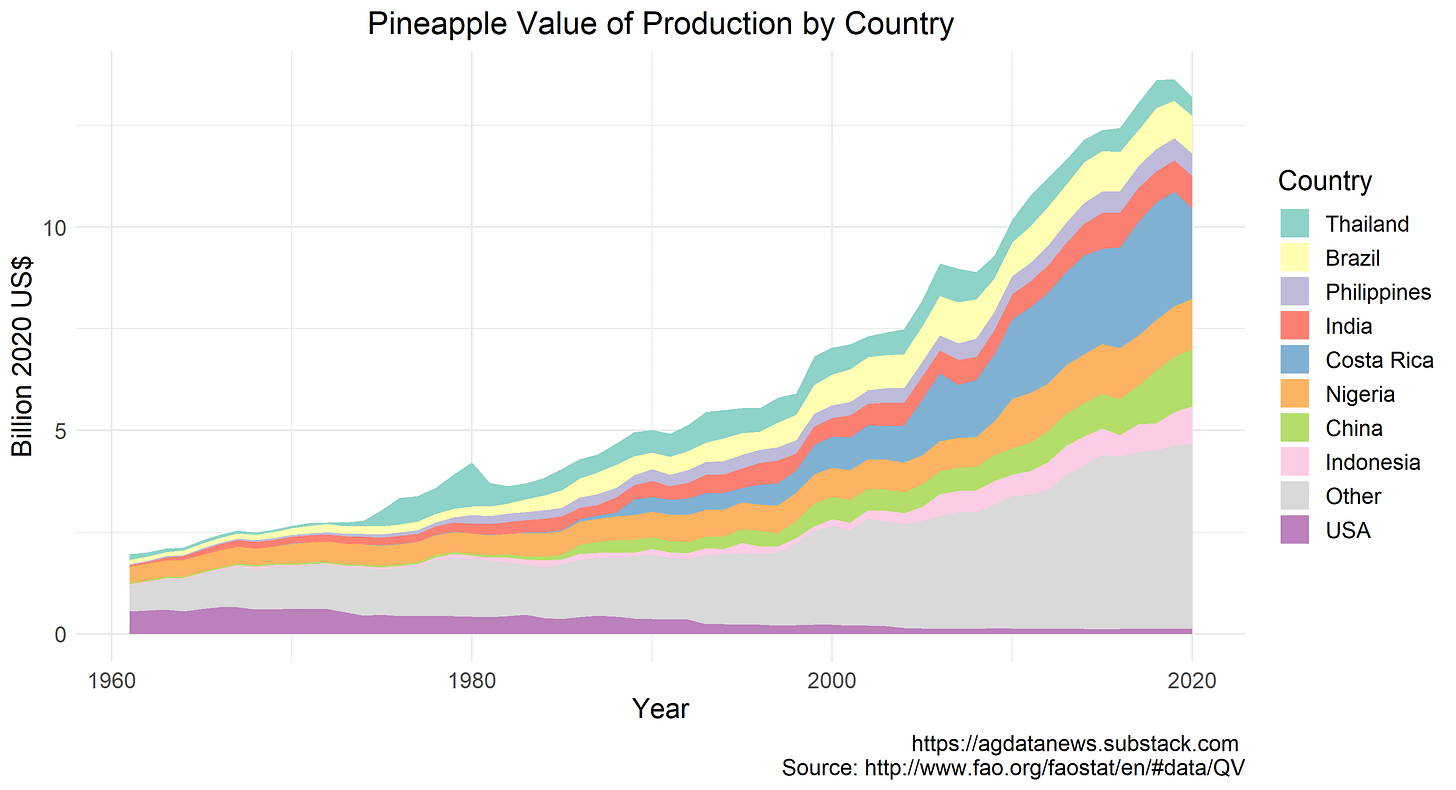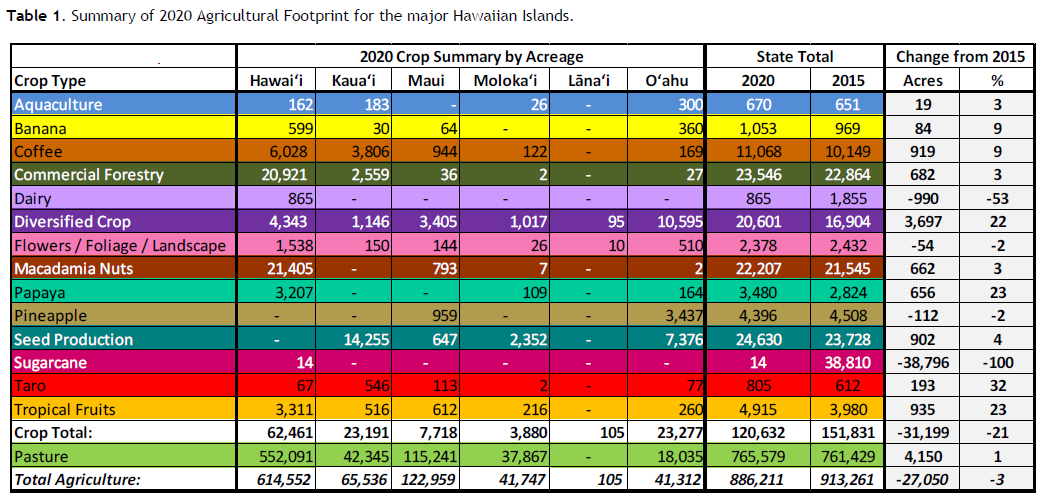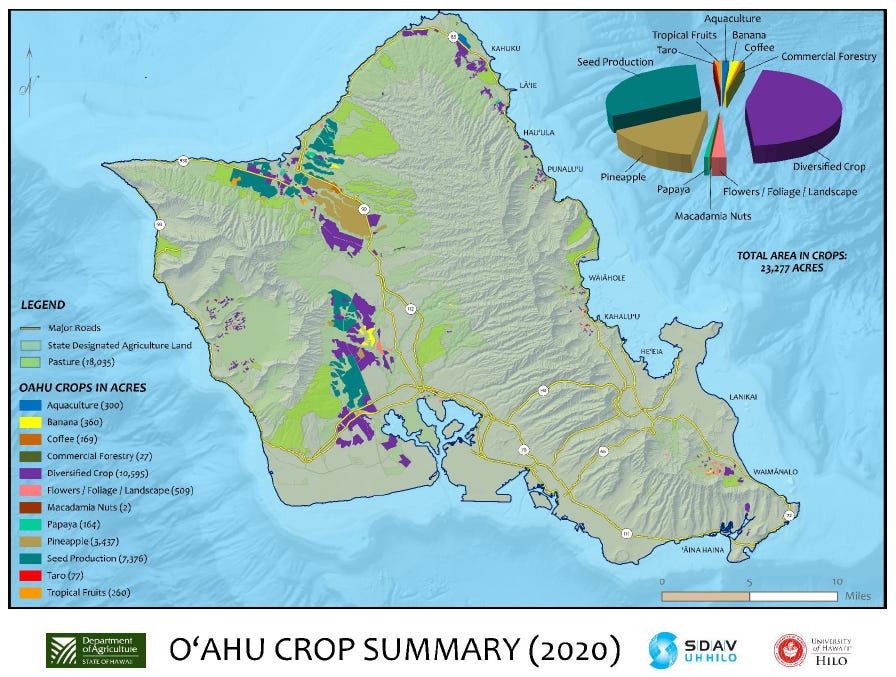Do They Still Grow Pineapples in Hawaii?
Hawaii agriculture is synonymous with pineapples and sugar. Sugarcane plantations boomed in the mid 1800s to supply northern US states that were cut off from the south during the Civil War. James Dole arrived in the islands in 1899 and started the Hawaiian Pineapple Company, which at its peak produced 75% of the world's pineapples.
In the last decade, media has reported the disappearance of these two commodities from Hawaiian agriculture. Dole and Del Monte moved most of their pineapple production out of Hawaii in the 1980s. The last sugar mill in Hawaii closed at the end of 2016.
Overall, the real value of Hawaiian farm products has dropped in half in the last 40 years as the state has shifted its emphasis towards tourism and agricultural producers have moved to lower cost places. In contrast, real farm receipts increased in California and in the US as a whole over the same period.
So, agriculture has declined, and sugar production has disappeared completely, but does Hawaii still produce pineapples?
According to USDA, pineapples were not one of the top 20 commodities produced in the state in 2017. The state farm profile from the 2017 census does not mention pineapples.
In 2020, USDA's Hawaii tropical fruits report listed the value of Hawaiian production for 34 tropical fruits, ranging from a high of $5.7m (bananas) to low of $1760 (Rollinia). But, no mention of pineapples.
Yet, when you visit the islands, as I was fortunate to do last week, you'll find tasty local pineapples.
According to United Nations FAO data, the United States produced $120m worth of pineapples in 2020. This is less than 1% of world production, but still large relative to the other commodities produced in Hawaii. The world's biggest pineapple producer is Costa Rica, followed by China and Nigeria. In 1961, the US produced more than a quarter of the world's pineapples, worth about $600m in 2020 dollars.
Essentially all US production occurs in the state of Hawaii; there is a tiny amount of pineapple production in Puerto Rico and American Samoa. FAO estimates that the $120m in 2020 production came from 170,000 metric tonnes of pineapples produced on 14,700 acres.
According to the 2017 Ag Census, the top crops in Hawaii by acreage were macadamia nuts (18,170) and coffee (9,300), but they don't mention pineapples.
In 2015 and 2020, the Hawaii Department of Agriculture constructed a detailed crop map for Hawaii. They estimated pineapple acreage at 4,396. They label small pineapple plantings that are mixed within smaller diversified farm operations as Diversified Crops, so actual pineapple plantings are higher than 4,396.
Their findings imply that pineapple acreage is less than half of the FAO number, but still more than other prominent crops such as banana and papaya.
Most of the pineapples are grown on Oahu.
So, in spite of what USDA data imply, the pineapple remains one of the larger crops in Hawaii, even though it has receded from its heyday. And just as well because I swear the local pineapples taste better, although that might be the vacation talking.
I made the plots in the article with this R code.




